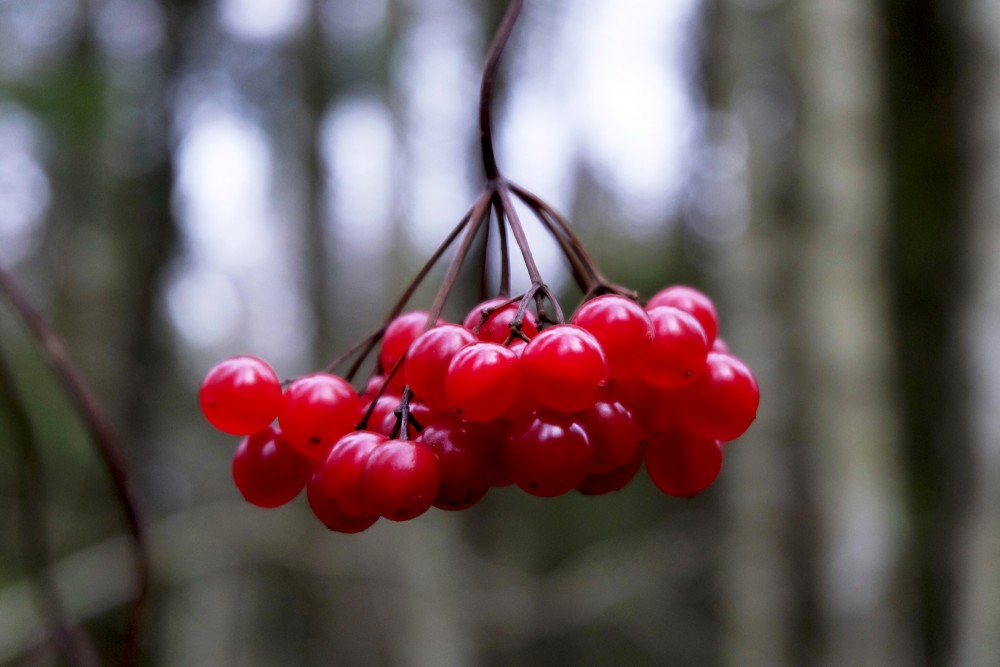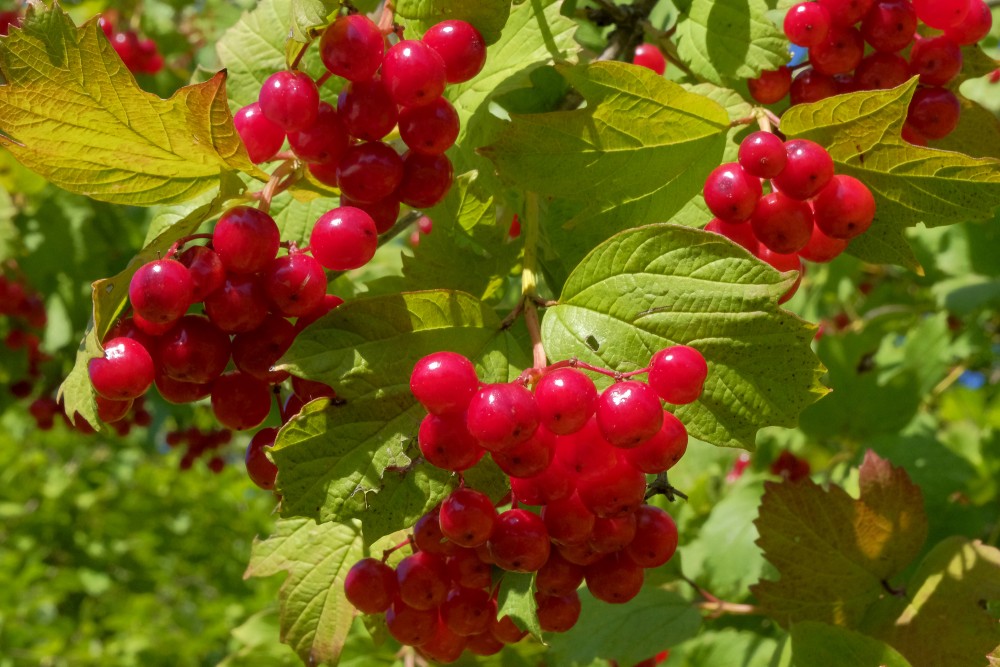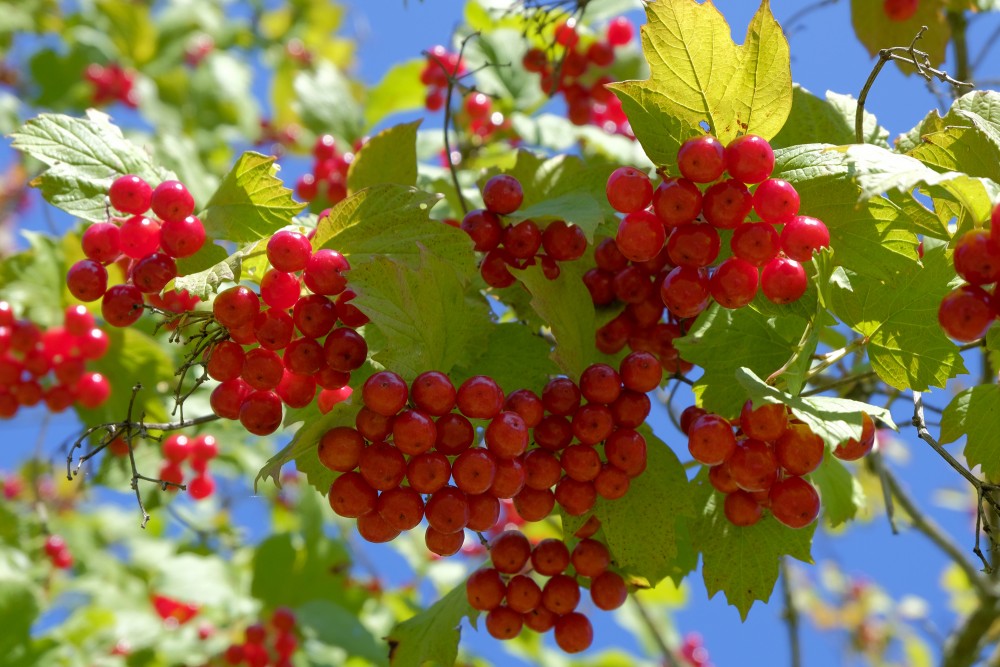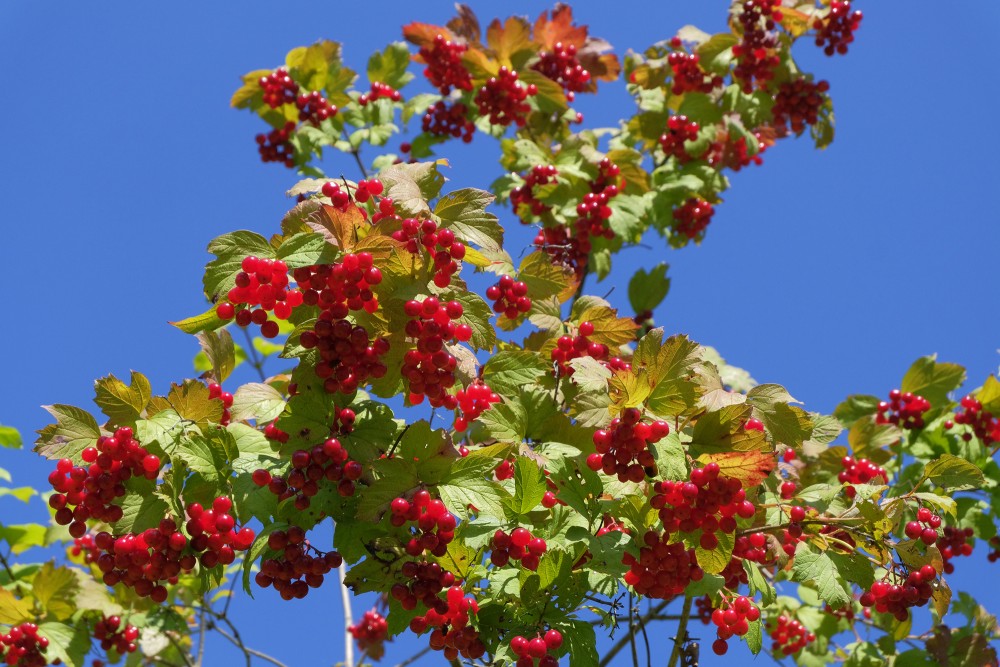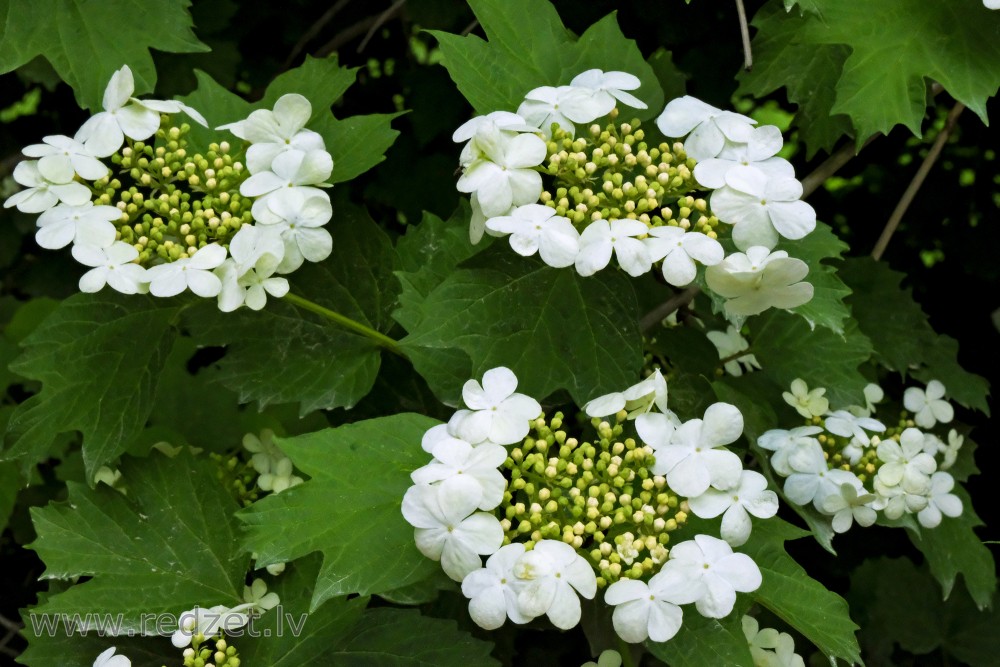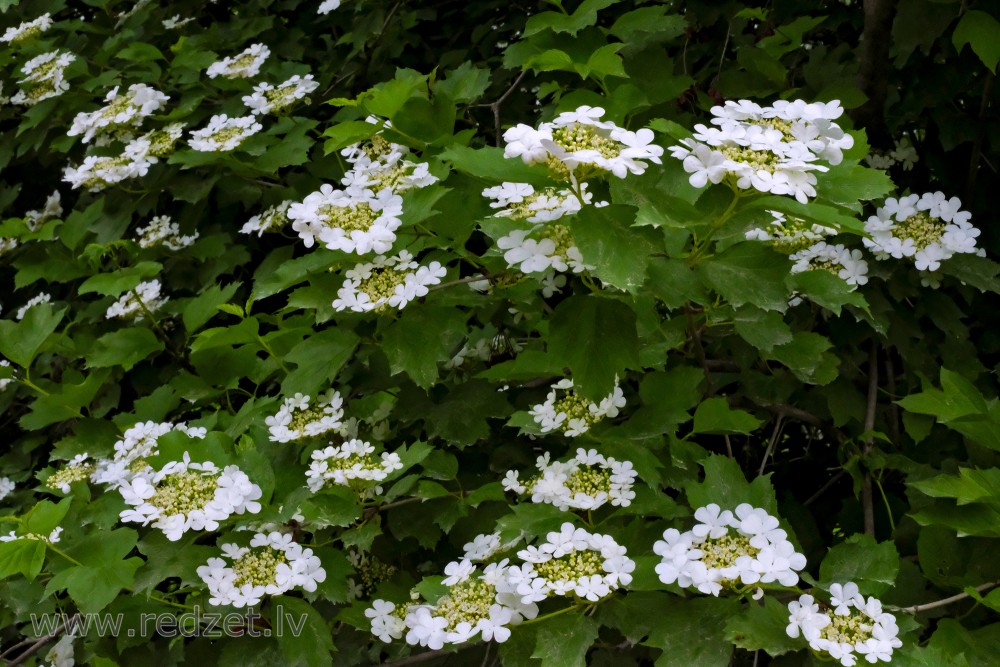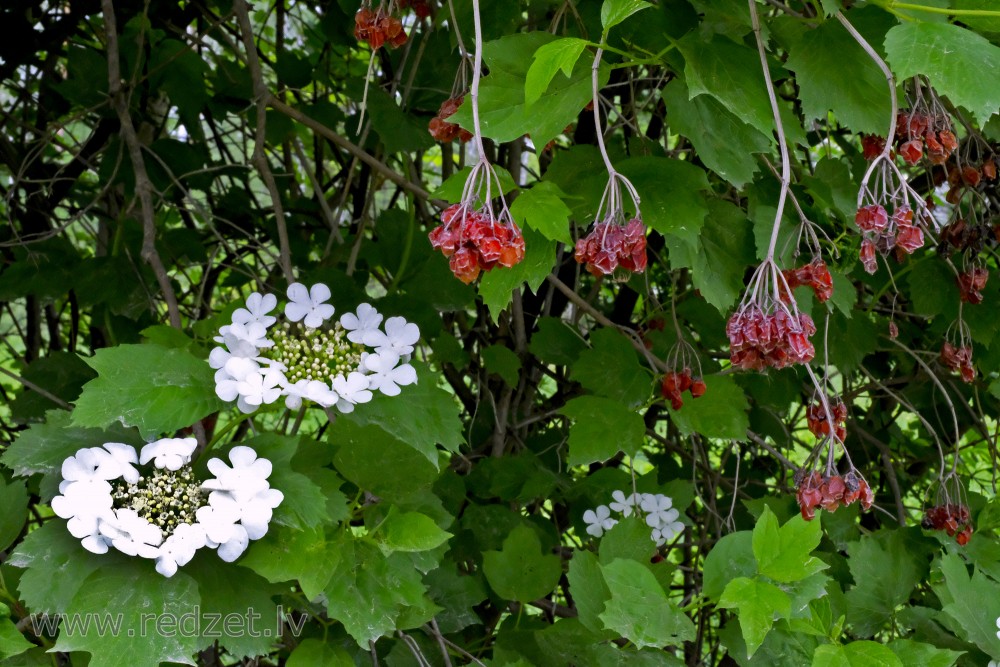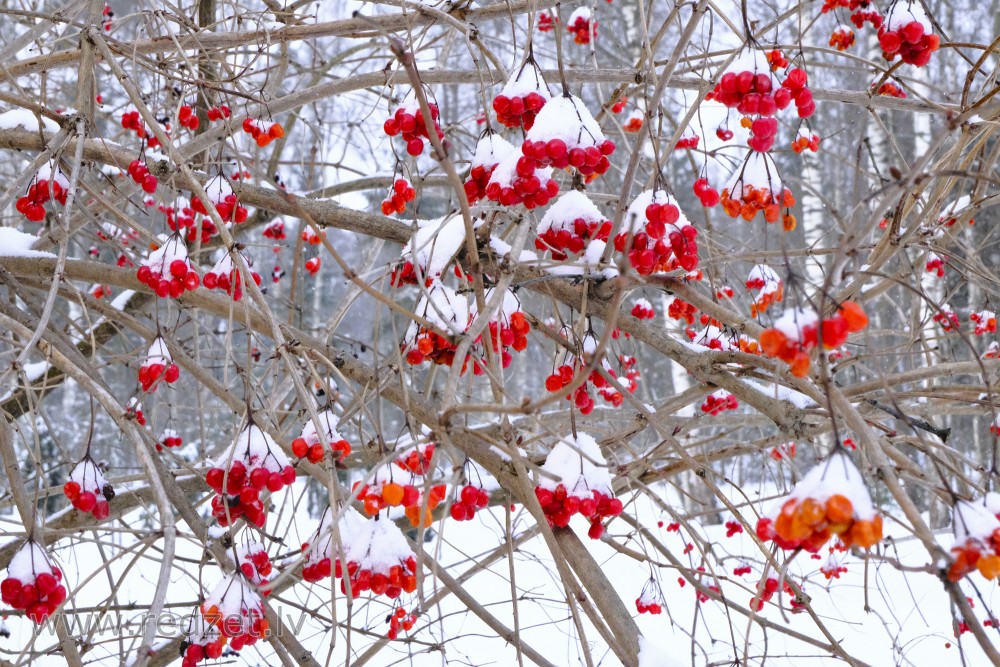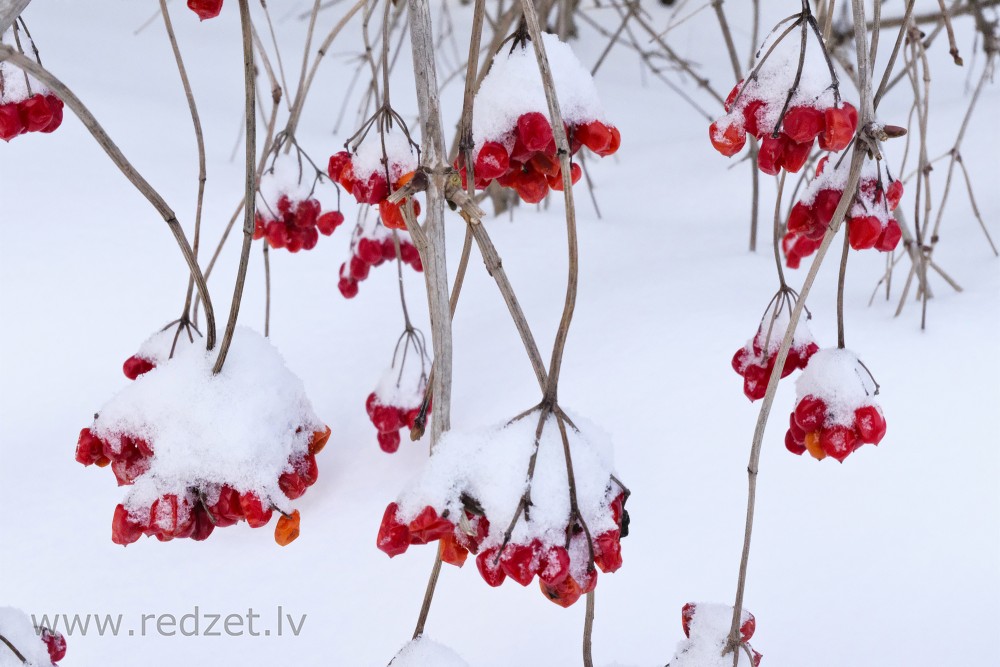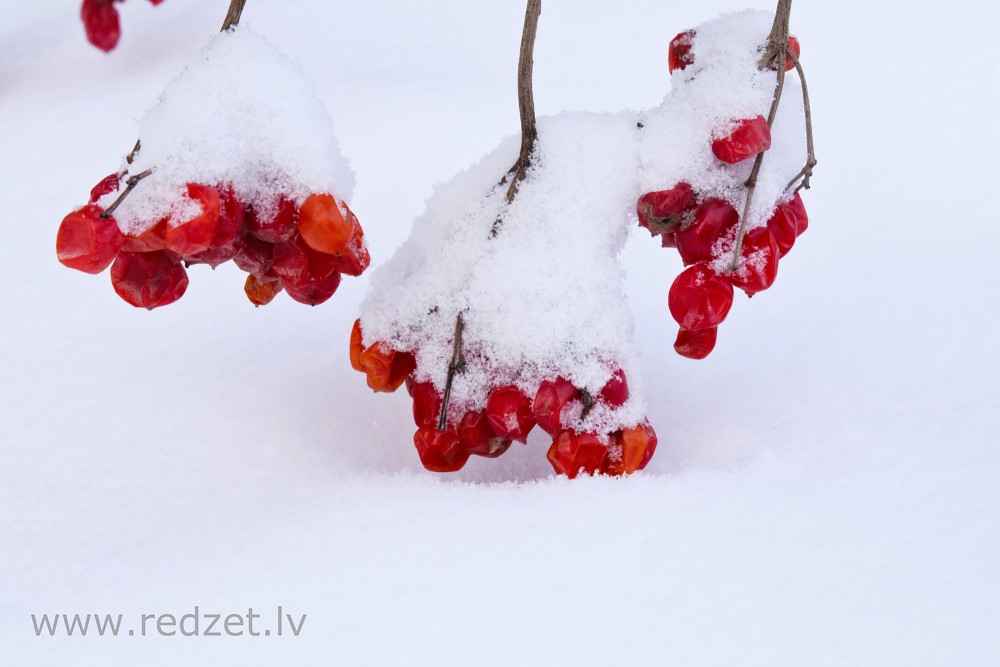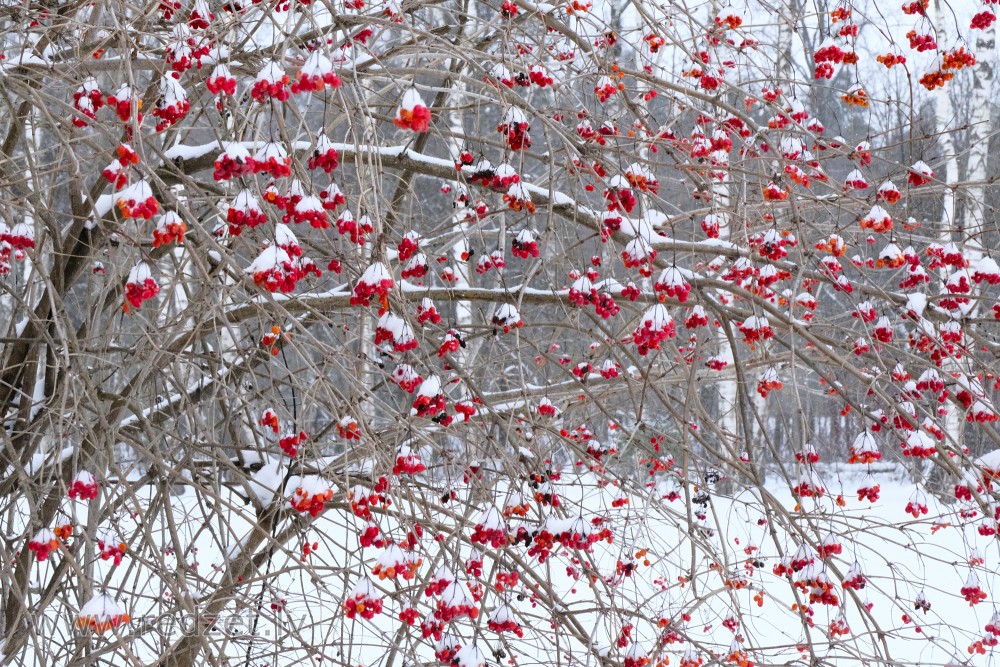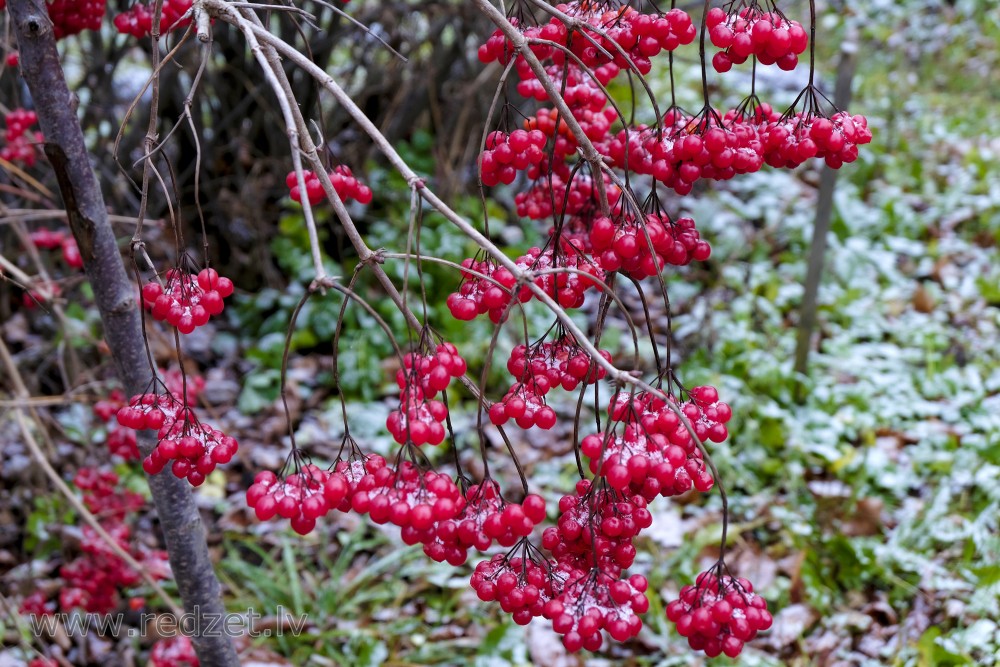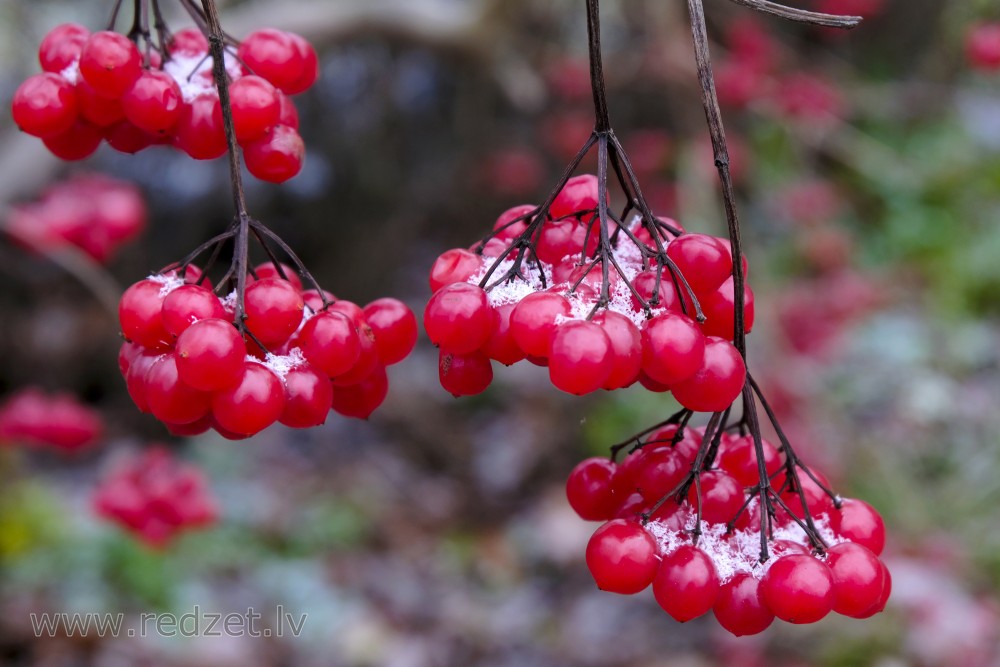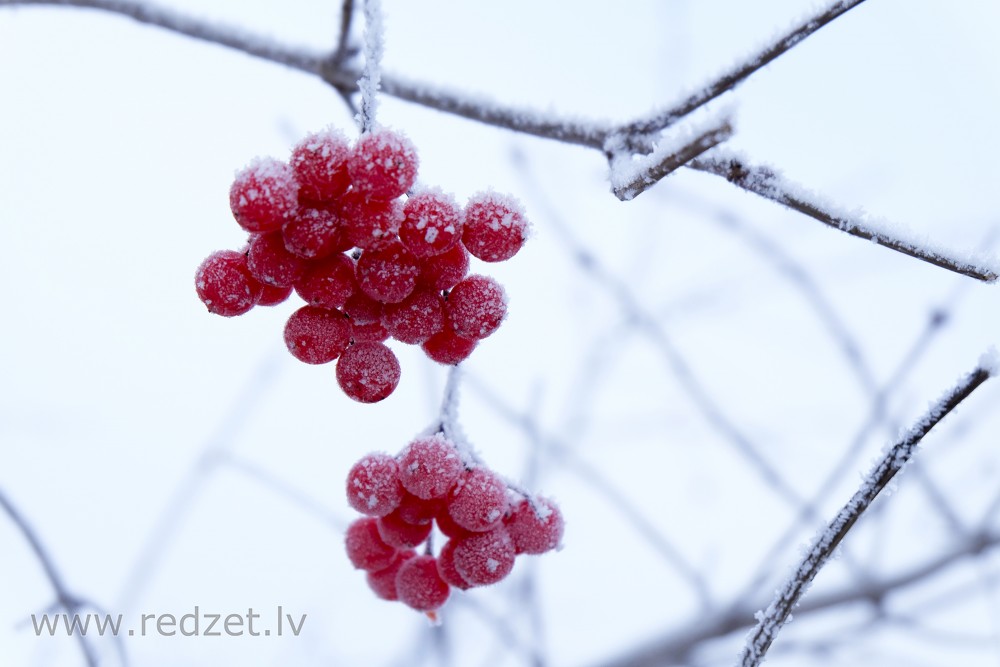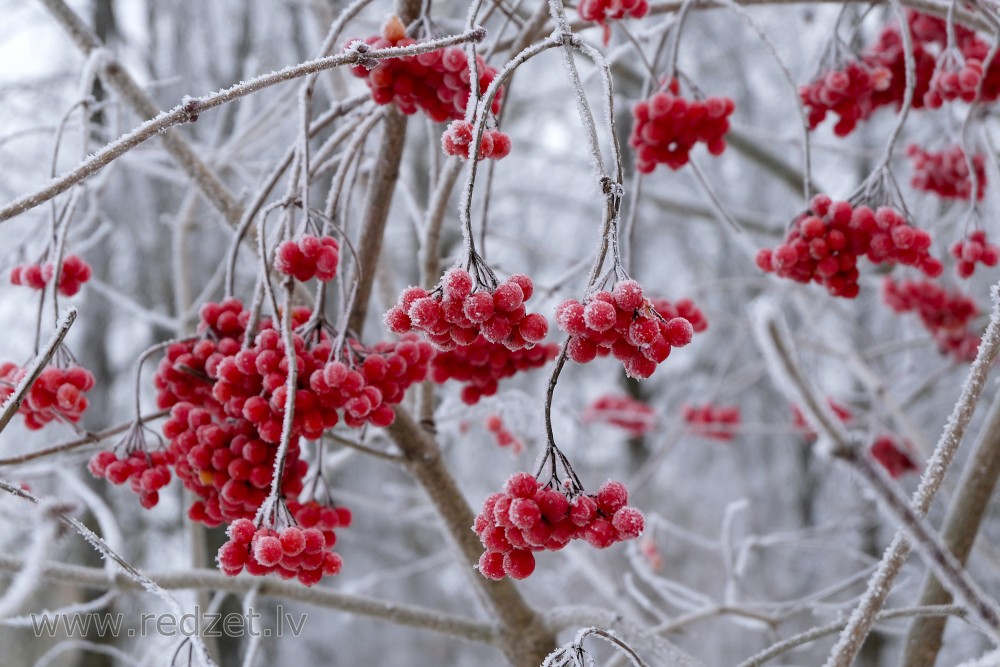Viburnum
Viburnum is a genus of about 150–175 species of shrubs or (in a few species) small trees in the moschatel family, Adoxaceae. Its current classification is based on molecular phylogeny. It was previously included in the family Caprifoliaceae.
The member species are native throughout the temperate Northern Hemisphere, with a few species extending into tropical montane regions in South America, Ukraine, Russia, and southeast Asia. In Africa, the genus is confined to the Atlas Mountains.
The generic name originated in Latin, where it referred to V. lantana.
The leaves are opposite, simple, and entire, toothed or lobed; cool temperate species are deciduous, while most of the warm temperate species are evergreen. Some species are densely hairy on the shoots and leaves, with star-shaped hairs.
The flowers are produced in corymbs 5–15 cm across, each flower white to cream or pink, small, 3–5 mm across, with five petals, strongly fragrant in some species. The gynoecium has three connate carpels with the nectary on top of the gynoecium. Some species also have a fringe of large, showy sterile flowers around the perimeter of the corymb to act as a pollinator target.
The fruit is a spherical, oval, or somewhat flattened drupe, red to purple, blue, or black, and containing a single seed;
Cultivation and uses
Many species of viburnum have become popular as garden or landscape plants because of their showy flowers and berries, fragrance, and good autumn colour of some forms. Some popular species, hybrids, and cultivars include:
- The hybrid Viburnum × bodnantense (V. farreri × V. grandiflorum) is particularly popular for its strongly scented pink flowers on the leafless deciduousshoots in mid- to late winter.
- Viburnum × burkwoodii (V. carlesii × V. utile)
- Viburnum × carlcephalum (V. carlesii × V. macrocephalum)
- Viburnum carlesii has round white flowerheads, strong fragrance, dense structure, and reddish leaves in autumn.
- Viburnum davidii is an evergreen species from China with blue fruit.
- Viburnum dentatum has flat-topped flowers, bluish fruit, and reddish leaves in autumn. It is somewhat salt-tolerant. The cultivar 'Blue Muffin' is more compact than the species and has fruit that are a deeper blue than the species.
- Viburnum dilatatum has flat-topped flowers, reddish leaves in autumn, and bright red fruit that persist into winter.
- V. × jackii – Jack's viburnum
- Viburnum × juddii (V. bitchiuense × V. carlesii)
- Viburnum plicatum has white flowers, textured leaves, reddish-black fruit, and can grow quite large under ideal conditions. The species can tolerate shade, but not drought.
- Viburnum × pragense (V. rhytidophyllum × V. utile)
- Viburnum × rhytidophylloides (V. lantana × V. rhytidophyllum)
- Viburnum rhytidophyllum is a popular evergreen species, grown mainly for its foliage effect of large, dark green leathery leaves with strongly wrinkled surface. This is the parent species of two popular hybrid cultivars known as 'Alleghany' and 'Pragense'. 'Alleghany' was selected from a hybrid between V. rhytidophyllum and V. lantana 'Mohican' (in 1958, at the US National Arboretum).
- Viburnum setigerum has upright, coarse structure and orange to reddish-orange fruit.
- Viburnum sieboldii has coarse, open structure, flat-topped flowers, reddish-black fruit, and can grow as a small tree.
- Viburnum tinus is a widely grown garden and landscape shrub.
Other uses
In prehistory, the long, straight shoots of some viburnums were used for arrow-shafts, as those found with Ötzi the Iceman.
The fruit of some species (e.g. V. lentago) are edible and can be eaten either raw or for making jam, while other species (e.g. V. opulus) are mildly toxic and can cause vomiting if eaten in quantity.
The bark of some species is used in herbal medicine, as an antispasmodic and to treat asthma.
en.wikipedia.org
https://en.wikipedia.org/wiki/Viburnum
Continue reading